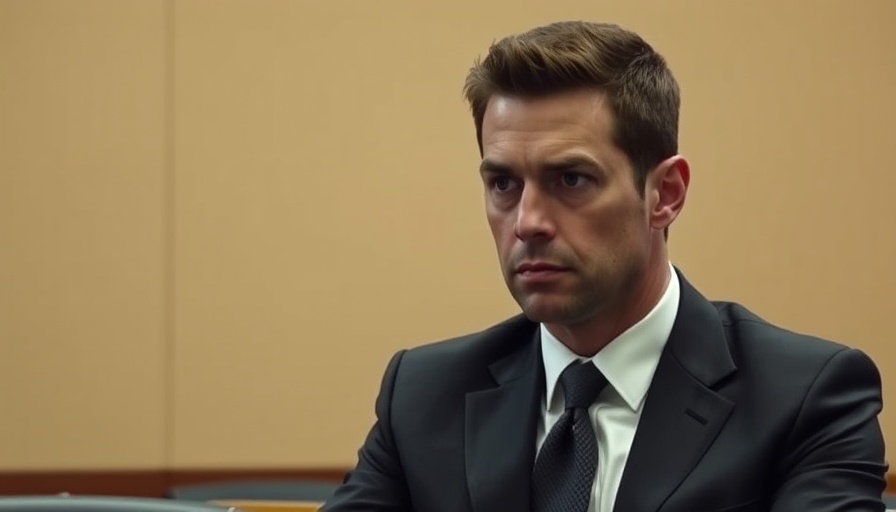
A Mistrial That Echoes Across Policing
The recent declaration of a mistrial in the case of former Grand Rapids Police officer Christopher Schurr, charged with the fatal shooting of Patrick Lyoya, brings renewed focus to a spectrum of issues surrounding law enforcement and accountability. After four days of deliberation proved fruitless, the jury could not reach a unanimous verdict in Schurr's second-degree murder trial linked to an incident on April 4, 2022, after a routine traffic stop spiraled into tragedy.
Patrick Lyoya was shot in the back of the head during a struggle that ensued after he allegedly gained control of Schurr's Taser. Schurr's defense painted a picture of a life-or-death scenario, emphasizing his fear of what could happen if Lyoya turned the Taser against him. However, the prosecution argued that the excessive use of force, especially considering the Taser had already been discharged, rendered the shooting unjustifiable.
The Role of Video Evidence in Police Trials
In an age dominated by cameras, both from police bodycams and civilian smartphones, the inclusion of video evidence has transformed legal proceedings. In Schurr's case, video footage was critical, showing the chaotic moments leading up to the shooting and shedding light on the officer's perspective during the struggle. This reliance on video not only adds transparency but adds complexity to the interpretation of events, raising questions about the narratives constructed by both defense and prosecution.
Comparatively, the recent acquittal of three former Memphis officers in the Tyre Nichols case further complicates public perception of police accountability. Both cases underscore the precarious nature of the justice system when paired with video evidence: powerful visuals can both exonerate and condemn, often depending on the viewer’s lens.
Public Reaction and the Quest for Justice
In the wake of the mistrial, the reactions vary significantly. For the Lyoya family, this decision signifies a harsh reality—a sense of bereft justice for Patrick and his loved ones. As Patrick’s father expressed, “We are bleeding… We will continue to fight until we get true justice.” Such sentiments resonate deeply within communities grappling with police-related deaths and the pursuit of accountability.
This outcome amplifies calls for reforms in policing practices across the board, highlighting the potential need for more nuanced training in de-escalation techniques and the proper use of force. Educational initiatives aimed at ensuring comprehensive understanding of equipment, such as Tasers, and their limitations could help reduce instances where a lack of knowledge leads to tragic outcomes.
Future Implications for Police Policies
Prosecutor Chris Becker has indicated that he will reevaluate the possibility of a retrial, adamant about not succumbing to public pressure. The outcome of this case could set precedents for future cases surrounding police conduct, particularly those involving deadly force. As law enforcement continues to modernize with technologies like AI analytics and body-worn cameras, there is a critical need to balance these advancements with robust policies focused on ethical accountability and community relations.
Looking forward, institutions can draw lessons from this trial to influence police training programs, putting an emphasis on mental health, officer wellness, and community engagement. The current climate calls out for strategies that prioritize not only the effectiveness of law enforcement but also their relationship with the citizens they serve.
Conclusion: Creating Pathways for Change
The mistrial of Christopher Schurr in the killing of Patrick Lyoya serves as a tragic reminder of the ongoing challenges inherent in law enforcement. As communities reflect on these events, we are urged to foster discussions on policies affecting police accountability, the use of force, and the role technology plays in shaping public safety. True reform necessitates an active community voice, prioritizing transparency and stronger ties between law enforcement and the populations they serve. Now is the time for stakeholders, including police departments, policymakers, and community advocates, to strive collectively for more effective and compassionate policing.
Police departments, government policymakers, and academic researchers must leverage this critical moment to reassess strategies that govern interactions between law enforcement and the community. By understanding the implications of this mistrial, we can foster environments where accountability, transparency, and equity prevail.
 Add Row
Add Row  Add
Add 

 Add Element
Add Element  Add Row
Add Row 




Write A Comment